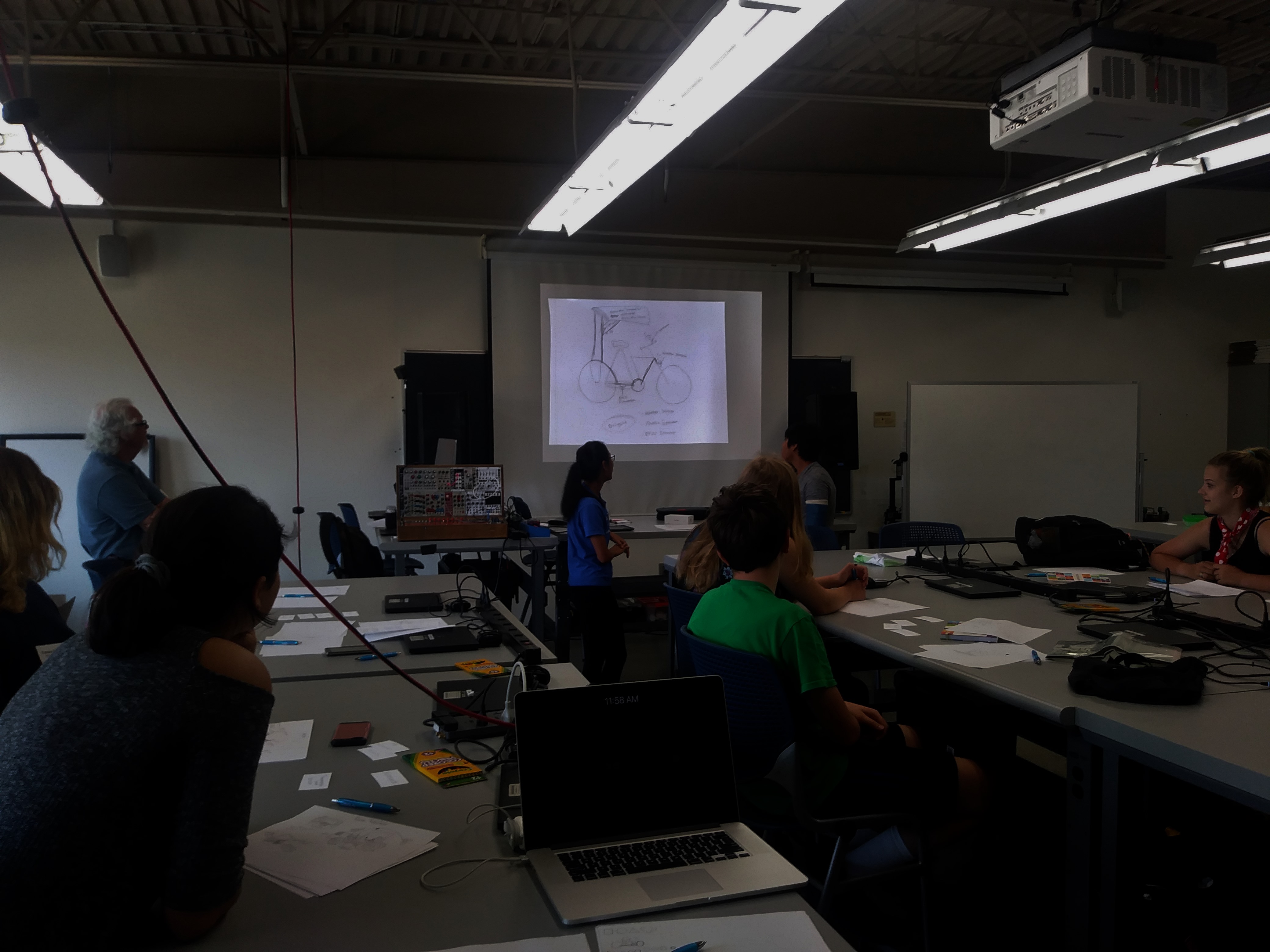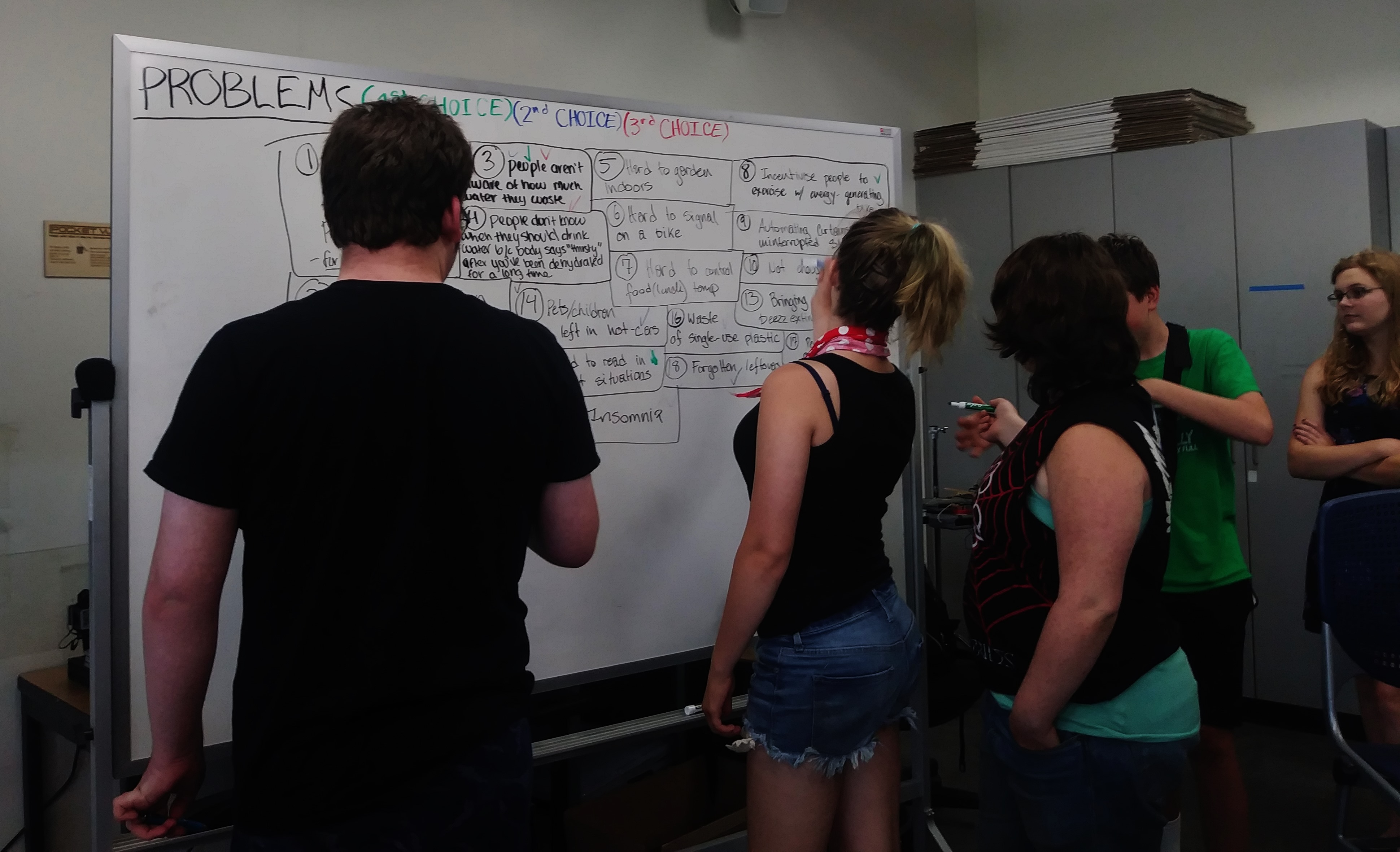Week 2 Day 1
- Guest Lecture: Bill Dresselhaus, Industrial Engineer
- Final Project: Problem Sharing, Discussion, and Voting
Guest Lecture: Bill Dresselhaus
Representation and communication of ideas is a critical part of collaborative invention and engineering. Today we had a a guest lecture by Bill Dresselhaus, an experienced industrial and design engineer and educator who has taught design sketching and product aesthetics to engineers for many years. Mr. Dresselhaus presented on the topic of idea-sketching and led the class in a guided design-drawing activity, to help students better represent their design ideas and consider aesthetics while also designing for function.

Final Project:
Problem Sharing
Last Friday, Inventors were asked to think about what problem they would like to solve, given the tools provided in this camp.
Their homework was to identify a minimum of three problems from the previously identified list of problems and narrow the scope of the problem to one that can be addressed via technology. Inventors were encouraged to discuss their problem topics with others, to help identify a concrete problem statement that includes a who, what, and a why
Today, we shared these problem statements as a class, refined them, and evaluate their potential as viable project problems.
Problem Selection and Voting
Once a short list of viable project problems had been identified, students were be asked to vote for their 1st, 2nd, and 3rd project choices.

The 4-5 most popular projects were selected as final project topics and a second round of voting took place. Students were distributed into project groups based on their voting, with a maximum group size of 3, with preference given to students who originally identified a problem topic.
Problem Discussion
Once project groups were identified, students joined their project group and met the mentor that will be assisting them for the first week of their project.
Students discussed what their problem solution might look like, and began to refine their problem and define requirements for their solution.
Identifying Requirements:
- What constitutes a “solution” to the project problem*?
- What is the defining feature/attribute of an invention that addresses this problem?
- What are some additional functions that the invention might have? (Think of physical sensors and actuators, not just abstract outcomes).
- Identify “Minimum” and “Reach” Functionality: What is the bare minimum your invention has to accomplish, what are some additional features you could reach for?
*Note: At this point it is okay to to sketch, list, and describe potential solutions, but try not to decide on a particular solution design or method, especially if it is your problem idea. Give everyone in the group a chance to contribute and explore potential solutions.